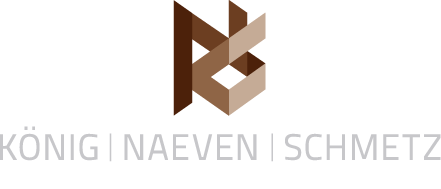Patents and Utility Models in Germany
In Germany there are two kinds of intellectual property rights for technical inventions: patent and utility model.
Patents
A patent is the typical intellectual property right for technical inventions, for devices as well as for processes and substances. By way of example an improved mechanism of a watch, enhancing the accuracy or robustness, may lead to a device patent whereas a new method for applying a coating to reduce reflections of the watch glass can be protected by a process patent. As substances it is possible to protect e.g. new alloys, chemical compounds, composite materials or pharmaceuticals.
Protection for Technical Inventions only
Non-technical inventions like plans, rules or methods for games or for business activities are excluded from patent protection. A differentiation between technical and non-technical inventions is sometimes difficult, especially in connection with computer programs. According to German Patent Law and the European Patent Convention computer programs as such, i.e. program listings, are not patentable. However, patent protection for so-called computer-implemented inventions is possible, if the solution for a technical problem is given, even if all features of the solution are realized by a computer program. A famous example for a computer-implemented invention having been protected by several patents is the audio coding format mp3.
Novelty and Inventive Step
Besides having technical nature an invention must be new and involve an inventive step. Novelty is given, if the invention does not form part of the state of the art, i.e. the invention must show a differing technical feature in comparison to any matter known by the public at the date of filing the patent application. Prior publications of the inventor himself may destroy novelty. Involving an inventive step means that the new development was not obvious for a person skilled in the art.
Grant of Patent
A patent is granted subsequent to positive official examination of the requirements for patent protection and lasts for a maximum of 20 years, beginning with the filing date. For the third and every following year a so-called annuity has to be paid to maintain the patent application or the granted patent. Only after publication of grant of patent it is possible to exclude third parties from using the invention.
Utility Models
Utility models are often called “petty patents” and serve to protect like patents technical inventions. However, in Germany a protection of processes by utility models is excluded by law. The term of a German utility model is three years and can be prolonged up to 10 years by paying maintenance fees. The standard of the inventive step for utility models is meanwhile the same as for patents.
In comparison to a patent two special characteristics of the utility model are important:
Registration without Examination
The German Patent and Trademark Office registers a utility model without examination with respect to novelty and inventive step within a few months. Hence, a utility model can be asserted against possible infringers very soon. However, due to the missing examination an action against an infringer involves a high risk for the prosecutor. Therefore it is highly recommended previous to starting an action to check the requirements for the protection, in particular novelty and inventive step by thoroughly investigating the relevant state of the art.
Grace Period with Respect to Novelty
For utility models there is a 6-month period preclusive of prejudice to novelty. This means that an inventor can obtain a utility model protection even subsequent to having made his own invention known to the public, provided he files the application within 6 months after the publication.
Patent Protection outside of Germany
The above text describes the situation in Germany which is – with respect to the patent right - very similar in most of the other European countries. However, in many countries there is no utility model and only patents are available for technical inventions.
European Patent
It is possible to obtain a so-called European Patent for 38 Member States of the European Patent Convention (EPC). The European Patent Office is in authority to examine a European patent application and to grant the patent. Subsequent to grant the European Patent automatically divides into a bundle of single national patents of the Member States and the patent owner is free to keep all of these national patents alive or to proceed only with some of them. As a rule even for just two or three Member States of the EPC it is usually cost-saving to go the European way instead of prosecuting separate national patent applications.
Furthermore, a so-called Unitary Patent may be available in the future, the official designation of which is “European patent with unitary effect”. It will be valid for all Member States of the European Union, except Spain refusing to take part. Due to the Brexit-referendum the starting date and the consequences for the United Kingdom are not clear.
International Patent Applications
The so-called Patent Cooperation Treaty (PCT) enables to file a single patent application with effect for most countries all over the world. During an international period a certain Patent Office, for Applicants with residence in Germany the European Patent Office, conducts a search for relevant prior art and gives an opinion with respect to patentability. However, there is no grant of an international patent. A “world patent” as sometimes quoted does not exist. To get a patent protection the applicant has to step into a so-called national phase and to conduct examination processes with all patent offices of which a patent grant is desired. The international patent application is not least an instrument to gain time prior to the decision about the countries and the financial investment associated therewith.
We would be glad to be of service for you to take care for obtaining, enforcing or defending protection for your technical inventions.



